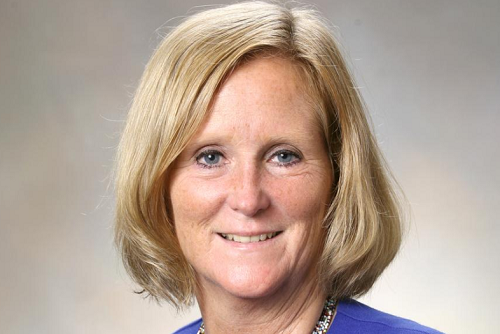Reset and assess

By Deborah Cunningham, Chief Investment Officer, Global Liquidity Markets, Federated Investors
Reflecting on the Federal Reserve meeting a week after the committee’s dovish decisions, my thought is that we got a hard reset. When your cell isn’t working like it should or isn’t connecting well to tower or Wi-Fi, you restart it. It takes a little time, but usually does the job.
The March Federal Open Market Committee (FOMC) meeting was just like that. The Fed has made such a spectacular shift in viewpoint, actions and projections over the last two quarters that it needed to reboot its message. The connection between it and the markets had not been clear enough. Yes, investors seem appreciative of policymakers’ sensitivity to real-time economic developments rather than stubbornly sticking to academic theory, but the change from projecting three rate hikes in 2019 to maybe none—we still think one—over a time period of about two quarters has been a lot for all to process.
The good news is that the maneuvering has been based on data, and presumably the FOMC will not stray from that approach. (Just because the Fed says it is data-dependent doesn’t mean all its decisions line up with economic numbers—trends are hard to follow in the moment.) While it would need strong, repeated communication to set up a hike in the next six months, Chair Jerome Powell has positioned the Fed to credibly act in either direction. It could feasibly dial back stimulus or push it forward.
But not hiking rates does not mean a pause in policy, and I am not just talking about the Fed announcing it will stop trimming its balance sheet holdings by fall (quantitative tapering continues with $50 billion rolled off in March and April). Forgoing a rate hike amid the ongoing massive fiscal policy stimulus is a form of easing. It could come back to bite policymakers at some point if they feel the economy needs more accommodation and they don’t have much room to cut rates.
This is why we think the Fed is likely to hike at least once more in this cycle, and why we think the market is too focused on the FOMC statement’s dramatically lower fed funds rate, inflation and GDP projections and is expecting too low of a path. The forward markets are pricing in a chance of rate cuts in 2020. While we extended our weighted average maturity (WAM) target ranges in March (prime and muni money funds by 10 days to 40-50 days and government funds by 5 days to 30-40 days), we think the U.S. economy is not out of steam just yet. Despite a negative inflection in the yield curve, there isn’t evidence of an imminent recession.
So we are resetting, too. We want to have wiggle room to withstand negative data but firepower left in case positive news steepens the curve. If the last 6-month period held so much drama, so could the next.
The week of the FOMC meeting ended with an announcement from the White House that President Trump intends to nominate Stephen Moore for a seat on the Fed’s board. His name has not officially been submitted as of this writing, but it looks like effort is again being made to fill out the board of governors, which is still needed.
Found this useful?
Take a complimentary trial of the FOW Marketing Intelligence Platform – the comprehensive source of news and analysis across the buy- and sell- side.
Gain access to:
- A single source of in-depth news, insight and analysis across Asset Management, Securities Finance, Custody, Fund Services and Derivatives
- Our interactive database, optimized to enable you to summarise data and build graphs outlining market activity
- Exclusive whitepapers, supplements and industry analysis curated and published by Futures & Options World
- Breaking news, daily and weekly alerts on the markets most relevant to you




